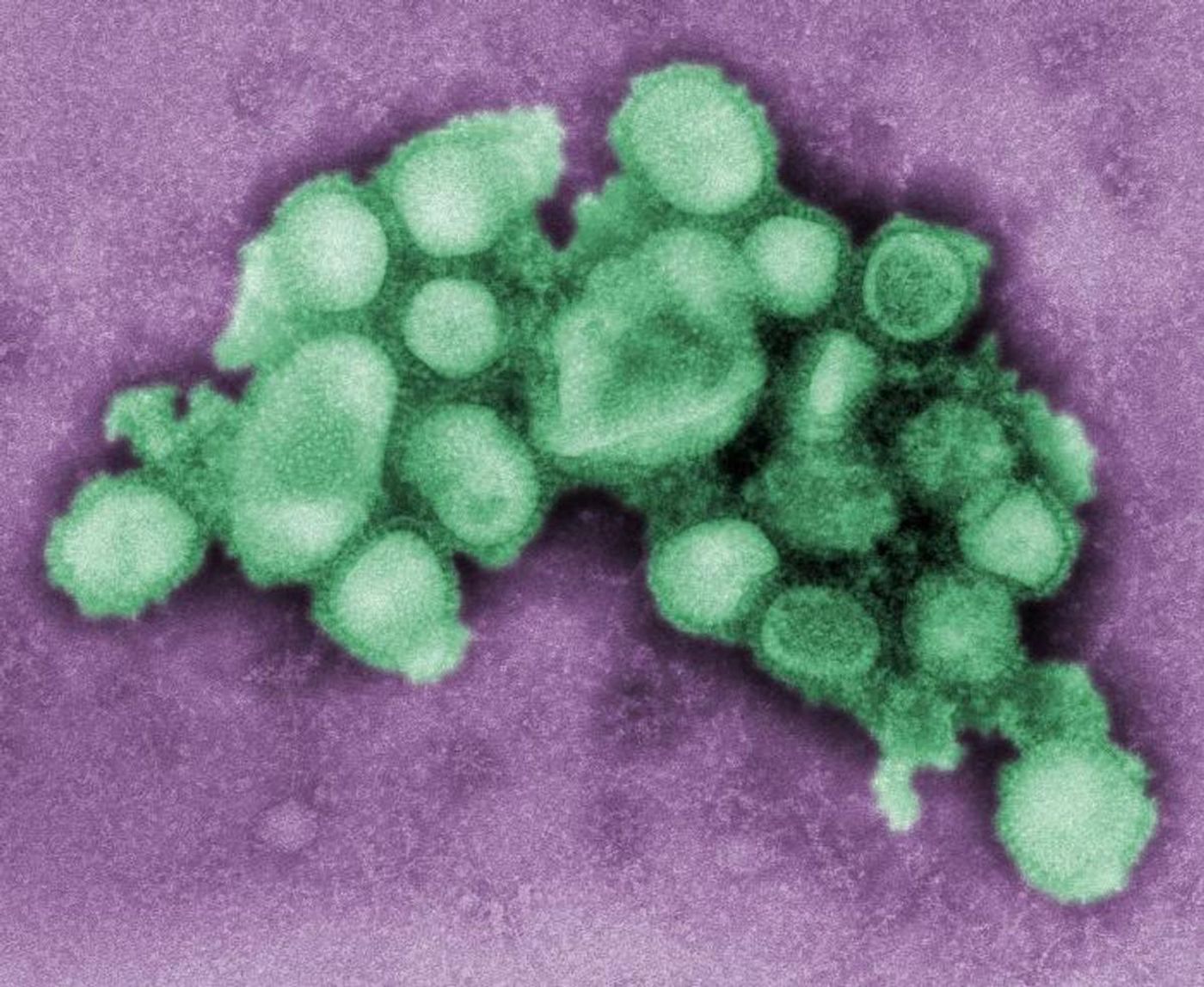What Happens When Two Viruses Infect the Same Cell?
Pathgenic microbes that infect cells can affect each other. It's not unusual for people with viral respiratory infections to also develop bacterial pneumonia, for example. But now that flu season is around the corner, researchers have been wondering how two infectious viruses like flu and SARS-CoV-2 might influence each other if they both infect the same cell. A recent study published in Virulence has used pig cells as a model to investigate that question.
This work revealed that in cells that had been previously infected with influenza, a coronavirus infection was totally prevented. This was not a shocking observation, because these infectious microbes are both competing for the same resource, which in this case is a host cell. Other research has suggested that viruses that cause the flu and cold don't typically infect people at the same time. But this new work also showed that if cells were first infected with coronavirus, their was little to no impact on a subsequent influenza infection. In this study, swine influenza was used so that a swine cell model would pick up the infection, and porcine respiratory coronavirus (PRCoV) was the coronavirus that the cells were exposed to.
Thus, the timing and the order of infection appear to be factors in whether cells will become infected with both flu and coronaviruses. Swine flu and PRCoV also prefer to infect different kinds of cells. The swine flu virus tends to go for cells with cilia, a small antenna-like appendage. Ciliated cells are located in the windpipe. But PRCoV tends to infect cells that don't have cilia and don't produce mucus.
While this work has not been confirmed with viruses that infect human cells, it may still be relevant; both swine flu and PRCoV have been used in other virus studies as models of flu and coronavirus.
A pre-print by researchers at the University of Glasgow had similar results. In their work, lung epithelial cells were exposed to both influenza A virus (IAV) and respiratory syncytial virus (RSV). The study found that the replication of RSV was inhibited when the cell was already infected with IAV, but the replication of IAV seemed to be promoted by RSV infection.
There are also known instances in which viruses can work together. Hepatitis D virus is the smallest virus known to infect people. It's genome is very small and encodes for two proteins through the same sequence - one uses a shorter version of the sequence to produce a protein early on in the infection, while the second protein is made from a longer sequence and is generated later on in infection. In order to infect cells, hepatitis D needs the help of hepatitis B and only occurs in people already infected, or people infected at the same time with hepatitis B. Hepatitis D infection is also prevented by the hepatitis B vaccine.
Sources: Taylor & Francis, bioRxiv, Virulence









